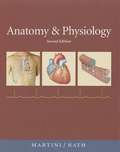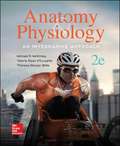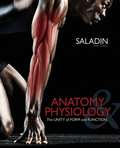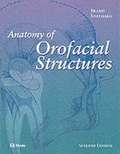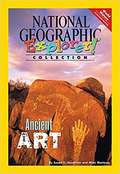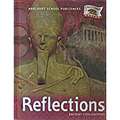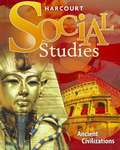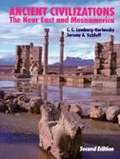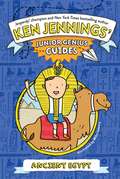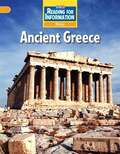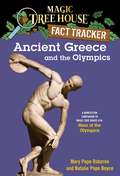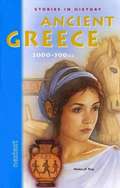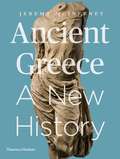- Table View
- List View
Anatomy and Physiology
by Frederic H. Martini Judi L. NathThis new textbook answers the need for a briefer version of Martini's Fundamentals of Anatomy & Physiology for the 2-semester anatomy and physiology course. With condensed explanations and less detailed discussions, this slim volume retains Martini's award-winning art program, key clinical discussions, and clear, straightforward writing style. Accompanied by a first-rate, text-specific supplements package, Anatomy & Physiology provides instructors and students with a compact and efficient learning system.
Anatomy and Physiology: An Integrative Approach
by Michael P. McKinley Valerie Dean O'Loughlin Theresa Stouter BidleHuman anatomy and physiology is a fascinating subject. However, students can be overwhelmed by the complexity, the interrelatedness of concepts from different chapters, and the massive amount of material in the course. Our goal was to create a textbook to guide students on a clearly written and expertly illustrated beginner's path through the human body.
Anatomy and Physiology: The Unity of Form and Function (6th Edition)
by Kenneth S. SaladinWith Saladin, students make connections through learning outcomes and assessments, integrated media, and a writing style that clearly depicts anatomy and physiology processes. A consistent set of chapter learning tools helps students identify and retain key concepts while the stunning visual program provides a realistic view of body structures and processes. Saladin's text requires no prior knowledge of college chemistry or cell biology, and is designed for a two-semester A&P course.
Anatomy of Orofacial Structures (Seventh Edition)
by Richard W. Brand Donald E. IsselhardThis comprehensive edition on orofacial structures provides a complete introduction with dedicated sections on dental anatomy,oral histology and embryology, head and neck anatomy.
Anatomy, Physiology and Disease
by Bruce J. Colbert Jeff Ankney Karen T. LeeFor all combined courses covering anatomy, physiology, and pathology in allied health programs, four year degree programs, military healthcare training centers, and other programs; for standard A & P I and II courses; and as an advanced high school courses.
Ancient Art, Pathfinder Edition (National Geographic Explorer Collection)
by Susan E. Goodman Mimi MortezaiNIMAC-sourced textbook
Ancient Art, Pioneer Edition (National Geographic Explorer Collection)
by Susan E. Goodman Mimi MortezaiNIMAC-sourced textbook
Ancient Civilizations
by Michael J. Berson Priscilla H. Porter Margaret Hill Tyrone C. Howard Bruce E. Larson Julio MorenoThis book of Ancient Civilizations is divided into six units, covering Early Humankind; Mesopotamia, Egypt, and Kush; The Ancient Hebrews; The Ancient Greeks; Early Civilizations of India and China; and The Development of Rome.
Ancient Civilizations (California Edition, Grade #6)
by Diane HartIn this book you will learn about the great civilizations of the ancient world. You will find out who built the great pyramids of Egypt, how the rulers of China and Rome conquered huge empires, and why powerful ideas such as the Ten Commandments and Greek democracy shaped the world.
Ancient Civilizations (HMH Social Studies)
by Houghton Mifflin HarcourtHMH Social Studies: Ancient Civilizations: Student Edition 2019
Ancient Civilizations: Student Edition 2019 (HMH Social Studies: Ancient Civilizations Ser.)
by Houghton Mifflin HarcourtNIMAC-sourced textbook
Ancient Civilizations: The Near East And Mesoamerica
by C. C. Lamberg-Karlovsky Jeremy A. SabloffAn introduction to and overview of New World and Old World civilizations through a comparative examination of well-known archaeological areas. This edition (first, 1979) includes an expanded final chapter discussing current debates about the development of ancient civilizations. For undergraduate level students. Annotation c. by Book News, Inc. , Portland, Or.
Ancient Egypt
by Ken Jennings Mike LoweryTravel back in time to the age of the pyramids with this interactive trivia book from Jeopardy! winner and New York Times bestselling author Ken Jennings.With this book about ancient Egypt, you'll become an expert and wow your friends and teachers with awesome ancient facts: Did you know that some Egyptians used to shave their eyebrows whenever a cat died? Or that some people worshiped a god of lettuce? With great illustrations, cool trivia, and fun quizzes to test your knowledge, this guide will have you on your way to whiz-kid status in no time.
Ancient Greece and the Olympics (Magic Tree House Fact Tracker #10)
by Mary Pope Osborne Sal Murdocca Natalie Pope BoyceMagic Tree House Research Guides are now Magic Tree House Fact Trackers! Track the facts with Jack and Annie! When Jack and Annie got back from their adventure in Magic Tree House #16: Hour of the Olympics, they had lots of questions. What did the ancient Greeks wear? What did they do for fun? Where were the very first Olympics held? How are our modern Olympics similar to the ancient Olympics? Find out the answers to these questions and more as Jack and Annie track the facts. Filled with up-to-date information, photos, illustrations, and fun tidbits from Jack and Annie, the Magic Tree House Fact Trackers are the perfect way for kids to find out more about the topics they discovered in their favorite Magic Tree House adventures.From the Trade Paperback edition.
Ancient Greece: A New History
by Jeremy McInerneyAncient Greece: A New History is a new, single-authored survey of the ancient Greek world that brings the past to life with a fresh narrative and vivid images. Drawing on the latest archaeological research and textual evidence, award-winning teacher and scholar Jeremy McInerney shows that many of the issues that concerned the ancient Greeks--justice and inequality, nationalism and xenophobia, medicine and science--are relevant today. <P><P> Key features include more than 200 color images; chapter-opening timelines, detailed maps and plans; chapter-ending illustrated "Spotlight" features; and instructor and student resources.
Ancient Greece: A Political, Social, And Cultural History
by Sarah B. Pomeroy Stanley M. Burstein Jennifer Tolbert Roberts Walter Donlan David W. TandyRevised and updated throughout, the third edition of Ancient Greece presents the political, social, cultural, and economic history and civilization of ancient Greece in all its complexity and variety. Written by five leading authorities on the classical world, this captivating study covers theentire period from the Bronze Age through the Hellenistic Era.
Ancient History of India - Competitive Exam
by Indic TrustThis is a compilation of questions answer of General History For Civil Services Competitive Examinations.
Ancient History to the Industrial Revolution
by GlobeThis book is about living in a global community, it will teach students about the people and places of the past and the present. It will help students prepare how to deal with events of the future and students will begin to explore how nations are bound to one another by many ties.
Ancient Lives Unveiled: The Pharaoh's Scribe; The Way of the Samurai
by Steven Otfinoski Joyce A. Barnes Michael JaroszkoNIMAC-sourced textbook
